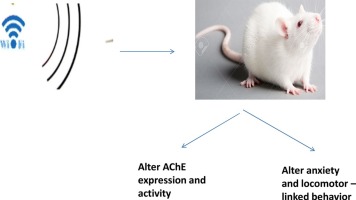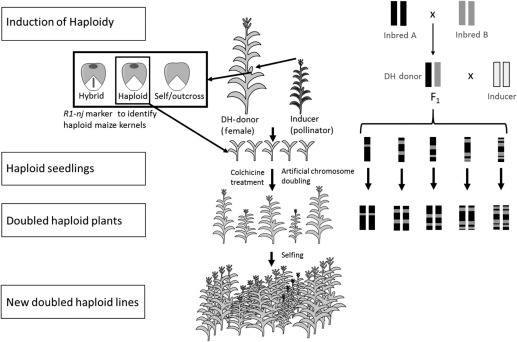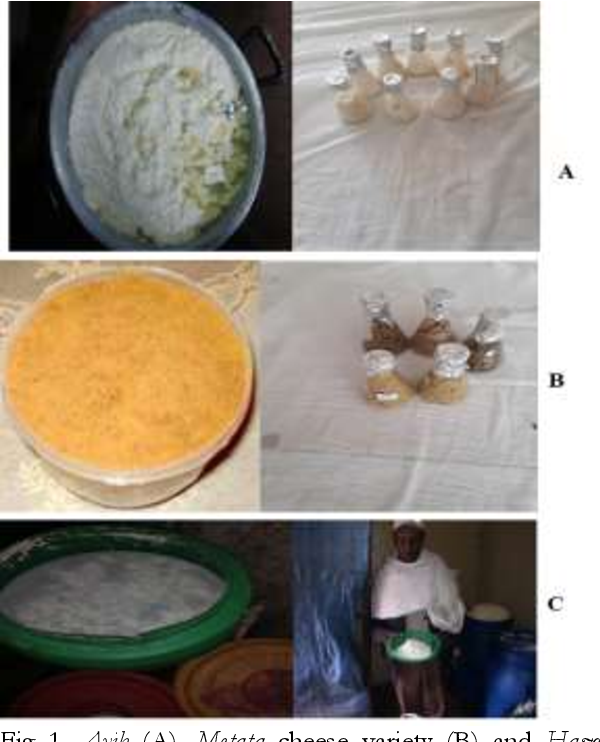Performance and Stability of Finger millet [Eleusine coracana (L.) Gaertn] Genotypes in Northwestern Ethiopia
Downloads
Background: Finger millet is one of the neglected (orphan) crops which thrive even on marginal lands where other crops cannot perform well. To boost the productivity and production of the crop, improved varieties are a key input. However, effect of genotype by environment interaction hampers variety development process. This causes instability of genotypes across environments. Hence,
information on performance and stability is of prime importance for breeders before releasing a certain variety of the crop.
Objective: This study was conducted to evaluate the performance and stability of finger millet genotypes for grain yield and other agronomic traits.
Materials and Methods: Sixteen finger millet genotypes were evaluated during the 2017, 2018 and 2019 main cropping seasons at Adet, Merawi and Finoteselam district in the Amhara Regional State using a randomized complete block design with three replications. Data were collected both on plot and plant basis, and then subjected to analysis of variance and Pearson correlation.
Results: The combined analysis of variance revealed significant variations due to genotype, environment and their interaction. A significant positive correlation was observed between yield related traits with grain yield, which is important for selection. Mean grain yields of the genotypes were ranged between 1.48 t ha–1 and 2.34 t ha–1, which could be to genetic variability among genotypes and the environments. Variances due to environment and genotype by environment interaction were found to be greater than that of genotype, and there was a crossover effect. In such cases, stability analysis is a possible procedure to examine genotypes for stability. Thus, GGE bi-plot analysis showed variance among genotypes. Hence, G-6, G-7 and G-1 were found to be stable genotypes. Among them, G-7 was found to be superior to all other genotypes in terms of yield advantage and stability.
Conclusion: Genotypes exhibited variances in stability due to the effect of genotype by environment interaction (about 8.9%). Among all the genotypes, G-7 was found to be an ideal genotype with higher yield, stability, and moderate resistance to blast disease. Having such merits, the Ethiopian Variety Release Standing Committee has officially approved G-7 (AD14-SEL045) as a new variety with breeder
name “Adet-05” for wider cultivation and use.
Abunu Marefia, Alemu Abate and Muluken Bantayehu.
Genetic gain in yield potential and
related traits of finger millet [Eleusine coracana
(L.) Gaertn] in Ethiopia. East African Journal of
Sciences, 16(2): 155–170.
Adane Gebreyohannes, Hussein Shimelis, Mark, L.,
Isack, M., Damaris, A.O. and Henry, O. 2021.
Finger millet production in Ethiopia:
Opportunities, problem diagnosis, key
challenges and recommendations for
breeding. Sustainability, 13: 1–23.
Amare Seyoum, Zigale Semahegn, Amare Nega and
Adane Gebreyohannes. 2019. AMMI and
GGE analysis of genotype by environment
interaction and yield stability of finger millet
[Eleusine coracana (L.) Gaertn] genotypes in
Ethiopia. International Journal of Trend in
Research and Development, 6(2): 379–389.
Andualem Wolie and Tadesse Dessalegn. 2011.
Correlation and path coefficient analyses of
some yield related traits in finger millet
[Eleusine coracana (L.) Gaertn] germplasms in
northwest Ethiopia. African Journal of
Agricultural Research, 6(22): 5099–5105.
Asfaw Adugna, Tesfaye Tesso, Erenso Degu, Taye
Tadesse, Feyera Merga, et al. 2011. Genotype
by environment interaction and yield stability
analysis in finger millet [Eleusine coracana (L.)
Gaertn] in Ethiopia. American Journal of Plant
Sciences, 2: 408–415.
Ashok, S., Patro, S.T, Anuradha, N. and Divya, M.
Studies on genetic variability for yield
and yield attributing traits in finger millet
[Eluesine coracana (L.) Gaertn]. International
Journal of Current Microbiology and Applied sciences,
: 90–95.
Chemeda Birhanu, Kebede Dessalegn, Dagnachew
Lule, Girma Chemeda, Geleta Geremew, et al.
Registration of ‘Kumsa’ finger millet
(Eleusine coracana) variety. East African Journal of
Sciences, 14(1): 95–98.
Chemeda Daba and Gemechu Keneni. 2010. Morphoagronomic classification of some native and
exotic finger millet [Eleusine coracana (L.)]
germplasm accessions in Ethiopia. East African
Journal of Sciences, 4(1): 20–26.
CSA (Central Statistics Agency). 2021. Agricultural
sample survey 2020/21. Report on area and production of major crops. Statistical Bulletin,
Addis Ababa, Ethiopia. Pp. 19–34.
Dagnachew Lule, Kassahun Tesfaye, Awol Assefa,
Masresha Fetene, Kebede Desalegn, et al.
Registration of ‘Addis-01’ finger millet
variety. East African Journal of Sciences, 9(2): 141–
Dagnachew Lule, Kassahun Tesfaye, Masresha Fetene
and Santie de Villiers. 2012. Multivariate
analysis for qualitative traits in finger millet
(Eleusine coracana subsp coracana) populations
collected from Eastern and Southeastern
Africa: Detection for patterns of genetic
diversity. International Journal of Agricultural
Research, 7(6): 303–314.
Dagnachew Lule, Kebede Dessalegn, Chemeda
Birhanu, Girma Mengistu, Gudeta Bedada, et
al. 2020. Registration of ‘Diga-2’ finger millet
(Eleusine coracana sub.spp. coracana) variety. East
African Journal of Sciences, 14(2): 175–180.
Dagnachew Lule, Masresha Fetene, Santie de Villiers
and Kassahun Tesfaye. 2014. Additive main
effects and multiplicative interactions (AMMI)
and genotype by environment interaction
(GGE) biplot analyses aid selection of high
yielding and adapted finger millet varieties.
Journal of Applied Biosciences, 76: 6291–6303.
Devaliya, S.D., Singh, M. and Visat, M.L. 2017.
Character association and path analysis in
finger millet [Eleusine coracana (L.) Gaertn].
Trends in Biosciences, 10(31): 6690–6694.
de Wet, J.M.J., Prasada Rao, K.E., Brink, D.E. and
Mengesha, M.H. 1984. Systematics and
evolution of Eleusine coracana (Gramineae).
American Journal of Botany, 71(4): 550–557.
EAA (Ethiopian Agricultural Authority). 2022. Plant
variety release, protection and seed quality
control directorate. Crop variety register issue
no. 25. June 2022, Addis Ababa, Ethiopia. Pp.
‒79.
Erenso Degu, Asfaw Adugna, Taye Tadesse and
Tesfaye Tesso. 2009. Genetic resources,
breeding and production of millets in
Ethiopia. Pp. 43–56. In: Zerihun Tadele (ed.).
New Approaches to plant breeding of orphan crops in
Africa. Proceedings of an international
conference, 19–21 September 2007, Bern,
Switzerland.
Falconer, D.S. 1989. Introduction to quantitative
genetics. 3rd edition. Longmans Green/John
Wiley and Sons, New York. Pp. 26–34.
Flores, F., Moreno, M.T. and Cubero, J.I. 1998. A
comparison of univariate and multivariate
methods to analyze G x E interaction. Field
Crops Research, 56: 271–286.
Ganapathy, S., Nirmalakumari, A. and Muthiah, A.R.
Genetic variability and interrelationship analyses for economic traits in
finger millet germplasm. World Journal of
Agricultural Sciences, 7(2): 185–188.
Gupta, S.M., Arora, S., Mirza, N., Pande, A., Lata, C.,
et al. 2017. Finger millet: A “certain” crop for
an “uncertain” future and a solution to food
insecurity and hidden hunger under stressful
environments. Frontiers in Plant Science, 8: 1–11.
Hailegebrial Kinfe, Yiergalem Tsehay, Alem Reda,
Redae Welegebriel, Desalegn Yalew, et al.
Yield performance and adaptability of
finger millet landrace in North Western
Tigray, Ethiopia. World News of Natural
Sciences, 15: 98–111.
Hittalmani, S., Mahesh, H.B., Shirke, M.D., Biradar, H.,
Govindareddy, U., et al. 2017. Genome and
transcriptome sequence of finger millet
[Eleusine coracana (L.) Gaertn] provides
insights into drought tolerance and
nutraceutical properties. BMC Genomics, 18:
–16.
Joshi, A.K., Kumari, M., Singh, V.P., Reddy, C.M.,
Kumar, S., et al. 2007. Stay green trait:
Variation, inheritance and its association with
spot blotch resistance in spring wheat
[Triticum aestivum (L.)]. Euphytica, 153: 59–71.
Kashiani, P. and Saleh, G. 2010. Estimation of genetic
correlations on sweet corn inbred lines using
SAS mixed model. American Journal of
Agricultural and Biological Sciences, 5(3): 309–314.
Kaya, Y., Akcura, M. and Taner, S. 2006. GGE bi-plot
analysis of multi-environment yield trials in
bread wheat. Turkey Journal of Agriculture and
Forestry, 30(1): 325–337.
Kebede Dessalegn, Dagnachew Lule, Megersa Debela,
Chemeda Birhanu, Girma Mengistu, et al.
Genotype by environment interaction
and grain yield stability of Ethiopian black
seeded finger millet genotypes. African Crop
Science Journal, 27(2): 281–294.
Kebere Bezaweletaw, Sripichit, P., Wongyai, W. and
Hongtrakul, V. 2006. Genetic variation,
heritability and path-analysis in Ethiopian
finger millet [Eleusine coracana (L.) Gaertn]
landraces. Kasetsart Journal (Natural Science),
(2): 322–334.
Mahanthesha, M., Sujatha, M., Meena, A.K. and
Pandravada, S.R. 2018. Correlation and path
coefficient analysis in finger millet (Eleusine
coracana (L.) Geartn). Journal of Pharmacognosy
and Phytochemistry, 7(4): 3193–3196.
Manoj, K., Narayan, B.D. and Jiban, S. 2019.
Phenotypic diversity of finger millet [Eleusine
coracana (L.) Gaertn.] genotypes. Malaysian
Journal of Sustainable Agriculture, 3(2): 20–26.
Molla Fentie, Alemayehu Assefa and Ketema Belete.
AMMI analysis of yield performance
and stability of finger millet genotypes across
different environments. World Journal of
Agricultural Sciences, 9(3): 231–237.
Molla Fentie. 2012. Participatory evaluation and
selection of improved finger millet varieties in
North Western Ethiopia. International Research
Journal of Plant Sciences, 3(7): 141–146.
Opole, R. 2019. Opportunities for enhancing
production, utilization and marketing of
finger millet in Africa. African Journal of Food
Agriculture Nutrition and Development, 19(1):
–13882.
Sao, A., Singh, P. Kumar, P. and Panigrahi, P. 2016.
Genetic analysis for estimation of yield
determinants in finger millet [Eleusine coracana
(L.) Gaertn]. Advances in Life Sciences, 5(16):
–5956.
Sharma, D., Jamra, G., Singh, U.M., Sood, S. and
Kumar, A. 2017. Calcium bio-fortification:
Three pronged molecular approaches for
dissecting complex trait of calcium nutrition
in finger millet [Eleusine coracana (L.) Gaertn]
for devising strategies of enrichment of food
crops. Frontiers in Plant Science, 7: 1–18.
Tafere Mulualem and Adane Melak. 2013. A survey on
the status and constraints of finger millet
(Eleusine coracana L.) production in Metekel
Zone, North Western Ethiopia. Direct Research
Journal of Agriculture and Food Science, 1(5): 67–
Tilman, D., Balzer, C., Hill, J. and Belfort, B.L. 2011.
Global food demand and the sustainable
intensification of agriculture. Proceedings of the
National Academy of Sciences of the USA, 108(50):
–20264.
Vetriventhan, M., Upadhyaya, H.D., Dwivedi, S.L.,
Pattanashetti, S.K. and Singh S.K. 2015.
Finger and foxtail millets. In: Singh, M. and
Upadhyaya, H.D. (eds.). Genetic and genomic
resources for grain cereals improvement. Academic
Press, Cambridge, USA. Pp. 291–319.
Wedajo Gebre, Tekle Yoseph, Mehari G/Mechical,
Kebere Bezaweletaw, Tibebu Simon, et al.
Grain yield stability and adaptability of
finger millet (Eleusine coracana L.) genotypes in
Southern Ethiopia. International Journal of
Research Studies in Science, Engineering and
Technology. 5(3): 11–15.
Wossen Tarekegne, Firew Mekbib and Yigzaw
Dessalegn. 2019. Performance and
participatory variety evaluation of finger
millet [Eleusine coracana (L.) Gaertn] varieties in
West Gojam Zone, Northwest Ethiopia. East
African Journal of Sciences, 13(1): 27–38.
Yan, W. 2001. GGE bi-plot, a windows application for
graphical analysis of multi-environment trial
data and other types of two-way data. Agronomy
Journal, 93: 1111–1118.
Yan, W. and Tinker, N.A. 2005. An integrated bi-plot
analysis system for displaying, interpreting, and
exploring genotype by environment
interaction. Crop Science, 45: 1004–1016.
Yan, W., Hunt, L.A., Sheng Q. and Szlavnics, Z. 2000.
Cultivar evaluation and mega environment
investigation based on GGE biplot. Crop
Science, 40(3): 597–605.
Yaregal Damtie, Firezer Girma, Alemu Terfessa and
Habtamu Demelash. 2019. Genetic diversity
and heritability estimates among Ethiopian
finger millet [Eleusine coracana (L.) Gaertn]
genotypes for yield and its contributing traits
at Assosa, Western Ethiopia. Asian Journal of
Plant Science and Research, 9(2): 6–15.
Yayeh Zewudie and Bosland P.W. 2000. Evaluation of
genotype, environment and genotype by
environment interaction for capsaicinoids in
Capsicum annum L. Euphytica, 111: 185–190.
Zigale Semahegn, Temesgen Teressa and Tamirat
Bejiga. 2021. Finger Millet [Eleusine coracana
(L.) Gaertn] breeding in Ethiopia. International
Journal of Research Studies in Agricultural Sciences,
(3): 38–42.

This work is licensed under a Creative Commons Attribution-NoDerivatives 4.0 International License.
- I am authorized by my co-authors to enter into these arrangements.
- I warrant, on behalf of myself and my co-authors, that:
- the article is original, has not been formally published in any other peer-reviewed journal, is not under consideration by any other journal and does not infringe any existing copyright or any other third party rights;
- I am/we are the sole author(s) of the article and have full authority to enter into this agreement and in granting rights to Springer are not in breach of any other obligation;
- the article contains nothing that is unlawful, libellous, or which would, if published, constitute a breach of contract or of confidence or of commitment given to secrecy;
- I/we have taken due care to ensure the integrity of the article. To my/our - and currently accepted scientific - knowledge all statements contained in it purporting to be facts are true and any formula or instruction contained in the article will not, if followed accurately, cause any injury, illness or damage to the user.
- I, and all co-authors, agree that the article, if editorially accepted for publication, shall be licensed under the Creative Commons Attribution License 4.0. If the law requires that the article be published in the public domain, I/we will notify Springer at the time of submission, and in such cases the article shall be released under the Creative Commons 1.0 Public Domain Dedication waiver. For the avoidance of doubt it is stated that sections 1 and 2 of this license agreement shall apply and prevail regardless of whether the article is published under Creative Commons Attribution License 4.0 or the Creative Commons 1.0 Public Domain Dedication waiver.
- I, and all co-authors, agree that, if the article is editorially accepted for publication in Haramaya Journals, data included in the article shall be made available under the Creative Commons 1.0 Public Domain Dedication waiver, unless otherwise stated. For the avoidance of doubt it is stated that sections 1, 2, and 3 of this license agreement shall apply and prevail.










